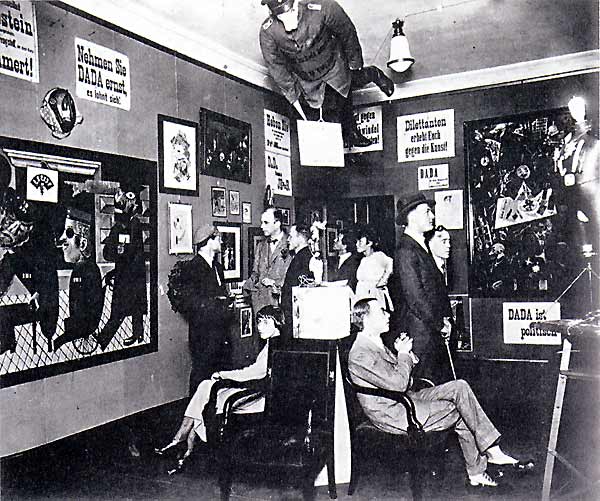 The history of Berlin in the 1920s is inextricably linked with the history of Germany, which was largely imposed by the Allied powers. Dissatisfaction with the harsh conditions of the Versailles Treaty led to confusion and a wave of political violence: Matthias Erzberger, among others, was murdered. who headed the German delegation to Versailles. 13 brand 1920 year, Freikorps units supporting the right-wing politician Wolfgang Kapp entered Berlin without encountering any resistance from the army. The government has left Berlin, but came back after a week, after the fall of the Kapp coup. The army withdrew its support for the putsch, when protesting workers called for a general strike.
The history of Berlin in the 1920s is inextricably linked with the history of Germany, which was largely imposed by the Allied powers. Dissatisfaction with the harsh conditions of the Versailles Treaty led to confusion and a wave of political violence: Matthias Erzberger, among others, was murdered. who headed the German delegation to Versailles. 13 brand 1920 year, Freikorps units supporting the right-wing politician Wolfgang Kapp entered Berlin without encountering any resistance from the army. The government has left Berlin, but came back after a week, after the fall of the Kapp coup. The army withdrew its support for the putsch, when protesting workers called for a general strike.
The beginning of the 1920s was a difficult period for Berlin. War reparations were a heavy burden on the German economy. The brand began to plummet in value, and the government was shocked, when Walter Rathenau was murdered. As the Minister of Foreign Affairs, he has just signed the Rapallo Treaty which strengthens economic ties with the Soviet Union, as the Western nations remained unrelenting. Rathhenau was murdered in his own home in Grunewald by Freikorps officers. When France and Belgium took the Ruhr in response to alleged default on reparations, in January 1923 All over Germany, a general strike was called for.
The combination of reparations and strikes led to the sharpest inflation in the history of the world. Berliners experienced the horrors of hyperinflation, because the savings have become worthless, and literally whole wheelbarrows of banknotes were needed to support the family. In working-class neighborhoods, street fights broke out between right and left. Foreigners came, to buy carpets and furs at bargain prices, which even rich Germans could no longer afford, and speculators made extra money or lost whole fortunes. He distracted the Berliners from it all for a while 8 November right-wing Munich coup carried out by former army officers, including General Ludendorff. The coup collapsed, but the Berliners had the opportunity to hear the name of one of the participants - Adolf Hitler.
Mark finally stabilized under the new Chancellor. Gustav Stresemann, who turned out to be an eminently gifted politician. Having realized, that only an economically efficient Germany could pay the reparations. The Allies relaxed the course. As part of Dawes' plan in 1924 In the year, loans came to Germany, especially from America, which triggered rapid economic development.
NIGHT LIFE AND ART
The economic recovery affected Berlin's social life. For many people, the city center has moved from the old Regierungsviertel (government district) around Friedrichstrasse and Unter den Linden to the Kurfurstendamm cafés and bars. Jazz reigned supreme in nightclubs, just like drugs (mainly cocaine) and all kinds of sex. There were clubs for transvestites, clubs, where you could watch naked dancing, or to dance by yourself as God created, and the police looked at it through their fingers. It was a legendary period later celebrated by Isherwood and others, when Berlin was for a short time the most open and tolerant city in Europe, a mecca for all of these, who rejected conventions and traditions. The twenties also saw the heyday of art, for the waves sent by the Dada movement were intercepted by others. George Grosz, in his iconoclastic caricatures, has subjected his times to the edge of satire, and John Heartfield, using photomontage techniques, made virulent political commentaries. Equally striking, although less didactic, was the work of artists such as Otto Dix and Christian Schad.
Producer Max Reinhardt continued to dominate the Berlin theater scene since his accession to the 1905 roku German Theater. Erwin Piscator has gone from political agitation to commercial theater at the Theater am Nollendorf Platz, without losing its innovative flair, a w 1928 Dreigroschen Oper was staged for the first time this year (Opera for three cents) Bertolt Brecht's Berlin has also become the center of the newest arts: in the interwar period, the UFA film studio in Neubabelsberg was the largest in Europe and legendary films were produced there, such as Fritz Lang's Metropolis. Doctor Caligari's office and the Blue Angel (with Marlena Dietrich in the lead role).
The less demanding tastes were flattered by countless musicals with a host of more or less undressed dancers.
These were also the golden years of the Berlin cabaret scene and the stage's most virulent satirists performed.